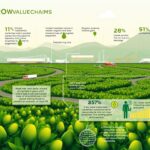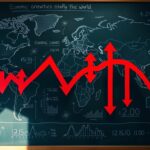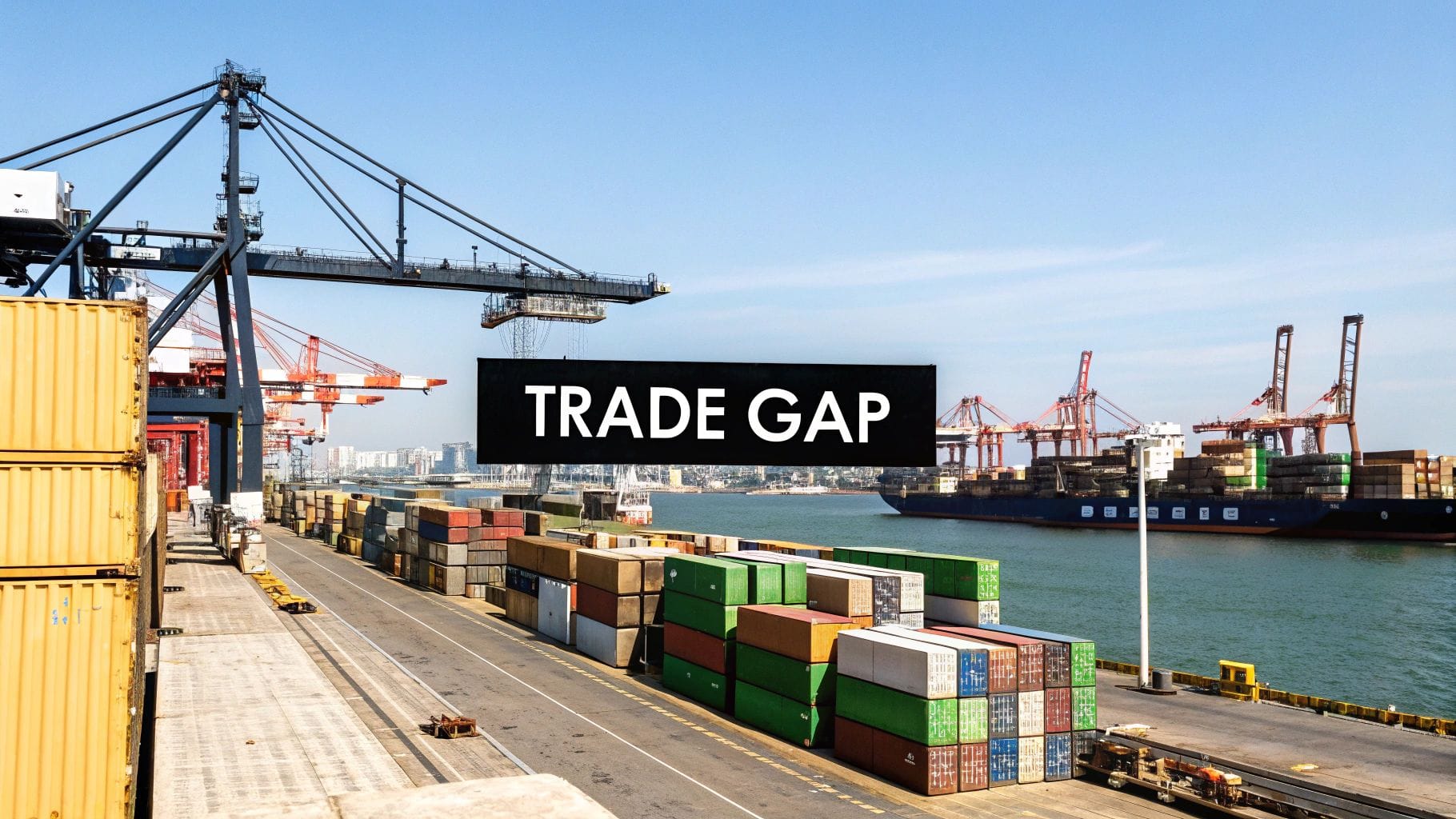Emerging market economies are taking centre stage as investors and businesses set their sights for 2025. Sure, everyone talks about rapid growth and digital adoption in these regions. But here’s a curveball. Emerging markets are projected to contribute about 65 percent of global economic growth by 2035, far outpacing developed nations. If you think these economies are just catching up, you might be shocked by how they’re actually shaping the future of technology, sustainability, and global trade.
Table of Contents
- What Defines Emerging Market Economies
- Major Trends Shaping 2025 Growth
- Risks And Challenges For Stakeholders
- Opportunities For Business And Investors
Quick Summary
| Takeaway | Explanation |
|---|---|
| Technological innovation drives growth | Emerging markets are rapidly adopting technologies like AI, blockchain, and fintech, reshaping their economies and creating new business opportunities. |
| Sustainability is a core focus | Sustainable development is becoming a crucial strategy in emerging markets, leading to investments in green technologies and environmentally friendly policies. |
| Geopolitical tensions reshape supply chains | The trend of diversifying supply chains is growing, with companies adopting a ‘China-plus-one’ strategy to mitigate risks and explore new markets. |
| Investment potential in diverse sectors | Robust demographics and GDP growth in regions like Southeast Asia and Africa present significant investment opportunities, particularly in technology, healthcare, and renewable energy. |
| Economic growth projections remain cautious | Global economic growth is projected at 2.8% for 2025, highlighting the need for stakeholders to navigate economic vulnerabilities and invest wisely. |
What Defines Emerging Market Economies
Emerging market economies represent a dynamic and complex segment of the global economic landscape, characterised by significant transformations and potential. These economies stand at a critical intersection of development, representing nations transitioning from traditional economic structures toward more sophisticated, integrated global systems.
Economic Classification and Characteristics
Defining emerging market economies goes beyond simple economic metrics. The World Bank uses the Gross National Income (GNI) per capita method to classify economies, providing a structured approach to understanding their developmental status. However, the definition encompasses more nuanced elements.
The term itself has a fascinating origin. According to economic historians, Antoine van Agtmael introduced the concept in 1981 to describe economies in transition, moving away from traditional developing economy labels. The following key characteristics distinguish these economies:
- Rapid Economic Growth: Significantly faster economic expansion compared to developed markets
- Structural Transformation: Transitioning from closed to open economic systems
- Investment Potential: Attracting substantial foreign and domestic investments
- Expanding Middle Class: Growing consumer base with increasing purchasing power

Structural Economic Dynamics
Emerging market economies are not monolithic but represent diverse economic landscapes with unique challenges and opportunities. The Corporate Finance Institute highlights that these economies typically demonstrate high productivity levels and increasing integration into global economic networks.
Their economic structures are marked by significant ongoing transformations. It often features a mix of modernising industrial sectors, rapidly developing technological infrastructures, and evolving regulatory environments. This complex ecosystem creates both unprecedented opportunities and inherent challenges for businesses, investors, and policymakers.
Key differentiators include their ability to adapt quickly, leverage technological innovations, and create robust economic ecosystems that can attract international capital while developing internal economic capabilities. Unlike fully developed economies, emerging markets possess greater flexibility and potential for substantial structural changes, making them critical players in the global economic landscape.
Understanding emerging market economies requires a multifaceted approach that goes beyond traditional economic indicators. It demands recognising their unique developmental trajectories and potential for innovation, as well as the complex interplay of economic, social, and technological factors that shape their growth and potential.
To clarify the key differences between emerging and developed market economies, the following comparison table summarises the distinguishing characteristics highlighted in this section:
| Feature/Factor | Emerging Market Economies | Developed Market Economies |
|---|---|---|
| Economic Growth Rate | Rapid, above global average | Stable, slower growth |
| Structural Transformation | Transitioning to open, integrated economies | Mature, fully integrated structures |
| Investment Potential | High; attracts foreign and domestic investment | Moderate; investment largely saturated |
| Middle Class Expansion | Fast-growing, rising purchasing power | Established, slow expansion |
| Flexibility for Change | High adaptability, potential for swift changes | Lower; change occurs gradually |
| Technological Leapfrogging | Often leapfrogs older technologies with new innovations | Incremental adoption of new technologies |
Major Trends Shaping 2025 Growth
The landscape of emerging market economies in 2025 is poised for transformative changes driven by technological innovation, sustainability imperatives, and complex geopolitical dynamics. These markets are not just passive recipients of global economic trends but active shapers of the future economic ecosystem.
Technological Revolution and Digital Infrastructure
Duke University’s Fuqua School of Business highlights the critical role of technological innovation in driving emerging markets. Mobile internet access, e-commerce platforms, and fintech solutions are rapidly transforming economic structures in regions like Southeast Asia, Africa, and India.

Digital infrastructure is becoming the backbone of economic growth. Advanced technologies such as artificial intelligence, blockchain, and cloud computing are enabling emerging markets to leapfrog traditional developmental stages. These technological investments are creating unprecedented opportunities for businesses, entrepreneurs, and investors seeking high-growth environments.
The digital transformation goes beyond mere technological adoption. It represents a fundamental restructuring of economic interactions, enabling more efficient resource allocation, reducing transaction costs, and creating new economic models that were previously unimaginable. For a deeper understanding of how organisations adapt to such technological shifts, learn more about organisational change strategies.
Sustainability and Green Economic Strategies
Research from the Fuqua School of Business indicates that sustainability is rapidly transitioning from a peripheral concept to a core strategic focus in emerging markets. Countries are making substantial investments in green energy infrastructure, sustainable urban development, and environmentally conscious economic policies.
This shift is driven by multiple factors: increasing environmental awareness, global climate change commitments, and recognition that sustainable development offers long-term economic advantages. Emerging markets are not just responding to global environmental pressures but are becoming innovation hubs for sustainable technologies and practices.
Geopolitical Reconfiguration and Supply Chain Dynamics
According to economic experts at Duke University, geopolitical tensions are fundamentally reshaping global economic strategies. The ongoing U.S.-China trade dynamics have accelerated a significant trend of supply chain diversification.
Many corporations are adopting a ‘China-plus-one’ strategy, which involves maintaining some production capabilities in China while simultaneously developing alternative manufacturing bases in other emerging markets. This approach mitigates geopolitical risks and creates new opportunities for countries seeking to attract international investments.
Emerging markets in 2025 will be characterised by their ability to adapt, innovate, and strategically position themselves within this complex global economic landscape. The convergence of technological innovation, sustainability imperatives, and geopolitical reconfiguration presents both challenges and unprecedented opportunities for economic growth and transformation.
To provide a quick overview, the table below summarises the three major forces shaping emerging market growth in 2025 and their main impacts discussed in this section.
| Trend/Force | Description | Main Impact on Emerging Markets |
|---|---|---|
| Technological Revolution | Rapid digital transformation: AI, blockchain, fintech | Drives innovation & leapfrogs traditional development |
| Sustainability & Green Strategies | Investments in green energy and sustainable development | Positions markets as clean tech innovators |
| Geopolitical Supply Chain Shifts | Diversification via ‘China-plus-one’ approach | Creates opportunities for alternative manufacturing hubs |
Risks and Challenges for Stakeholders
The emerging market economies landscape in 2025 presents a complex terrain of opportunities intertwined with significant risks and challenges that demand strategic navigation from various stakeholders, including investors, governments, and businesses.
Economic Growth and Systemic Vulnerabilities
The United Nations Department of Economic and Social Affairs reveals critical insights into the economic challenges facing emerging markets. Global economic growth is projected at a modest 2.8% in 2025, falling below the pre-pandemic average of 3.2%. This subdued growth trajectory underscores the persistent economic vulnerabilities that stakeholders must confront.
Developing economies continue to face substantial obstacles in mobilising critical investments. The challenges extend beyond mere financial constraints, encompassing complex systemic issues related to infrastructure development, technological adaptation, and human capital enhancement. These limitations create significant barriers to sustainable economic progression.
Geopolitical and Trade Uncertainties
A May 2025 UN report highlights the precarious global economic environment characterised by heightened trade tensions and elevated policy uncertainty. The surge in international tariffs threatens to disrupt global supply chains, raise production costs, and amplify financial market turbulence.
Stakeholders must develop robust risk mitigation strategies to navigate these complex geopolitical dynamics. The increasing protectionist sentiments and trade restrictions create an unpredictable business environment that demands exceptional adaptability and strategic foresight.
Structural Transformation and Investment Challenges
According to UN development insights, developing countries face significant challenges in leveraging their workforce potential. The critical task involves moving up the manufacturing and services value chains, which requires substantial investments in education, technological infrastructure, and skill development.
Inflation remains a persistent concern, with gradual easing offset by continued economic uncertainties. Climate-related disruptions and geopolitical tensions further complicate the economic landscape, creating additional layers of complexity for stakeholders seeking sustainable growth strategies.
The emerging market ecosystem in 2025 demands a sophisticated approach that balances risk management with innovative strategic planning. Successful stakeholders will be those who can demonstrate exceptional adaptability, technological integration, and a nuanced understanding of the evolving global economic dynamics.
Opportunities for Business and Investors
The emerging market landscape in 2025 offers a compelling narrative of unprecedented opportunities for businesses and investors willing to navigate its complex yet dynamic terrain. These markets are not just potential investment destinations but emerging epicentres of innovation, technological transformation, and economic potential.
Private Equity and Investment Frontiers
Cornell University’s SC Johnson College of Business reveals compelling insights into the investment potential of emerging markets. Regions like Southeast Asia, Latin America, and parts of Africa are distinguished by robust demographic trends, faster GDP growth, and expanding middle-class populations.
Investors are discovering rich opportunities across multiple sectors. Technology, infrastructure, healthcare, and renewable energy are emerging as particularly attractive domains. The combination of youthful demographics, increasing urbanisation, and technological adaptability creates a fertile ground for strategic investments that promise substantial long-term returns.
Digital Transformation and Financial Innovation
Duke University’s Fuqua School of Business emphasises the transformative potential of technological innovation in emerging markets. The rapid expansion of mobile banking and digital payment platforms is revolutionizing financial services, providing unprecedented access to previously underserved populations.
E-commerce platforms and digital marketing strategies are opening new consumer engagement channels. Businesses can now leverage sophisticated digital ecosystems to reach millions of potential customers, creating scalable and innovative business models that transcend traditional market limitations.
Long-Term Economic Growth Projections
S&P Global projects that emerging markets will contribute approximately 65% of global economic growth by 2035. Nine key emerging markets are expected to rank among the world’s 20 largest economies, signalling a fundamental shift in global economic dynamics.
The opportunities stem from multiple strategic advantages: abundant natural resources, significant workforce potential, adaptable manufacturing capabilities, and emerging technological ecosystems. Energy transition, supply chain reconfiguration, and technological developments are creating new investment pathways that promise substantial value creation.
Businesses and investors entering these markets must adopt sophisticated, nuanced strategies that recognise the unique characteristics of each emerging economy. Success will depend on understanding local contexts, embracing technological innovations, and developing flexible, adaptive business models that can navigate the complex and rapidly evolving landscape of emerging market economies.
Frequently Asked Questions
What are emerging market economies?
Emerging market economies are nations that are transitioning from a low-income to a more industrialised economy, characterised by rapid economic growth, structural transformation, and increasing integration into global markets.
What trends are shaping emerging market economies in 2025?
Key trends include technological innovation, sustainability strategies, and geopolitical reconfiguration affecting supply chains, all of which contribute to shaping the economic landscape in emerging markets.
What opportunities will exist for investors in emerging markets by 2025?
Investors can find numerous opportunities in sectors like technology, healthcare, renewable energy, and infrastructure, fuelled by robust demographic trends and increasing urbanisation in emerging markets.
What are the risks associated with investing in emerging market economies?
Investors face risks such as economic vulnerabilities, geopolitical uncertainties, and structural challenges within these markets, which require strategic navigation and risk management approaches.
Spot the Shifts in Emerging Markets Before They Happen
Are you feeling the weight of rapid change and uncertainty as emerging market economies in 2025 race ahead with technological revolutions, shifting supply chain dynamics, and new green investment demands? Many professionals and decision-makers struggle to stay informed and ahead of these fast-moving developments. The article breaks down the need to balance risk and seize investment opportunities, but real-time analysis is critical if you want to succeed.









































































































